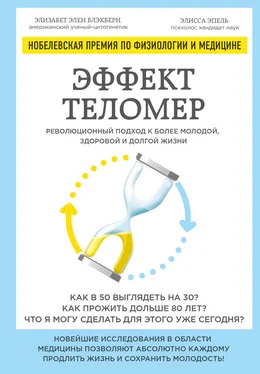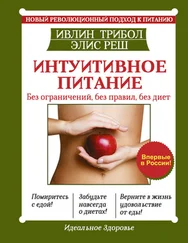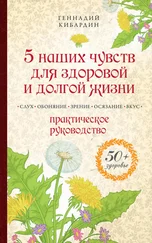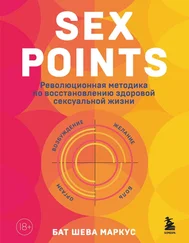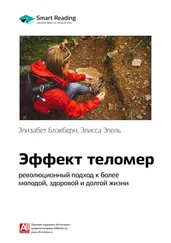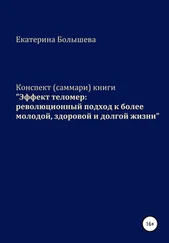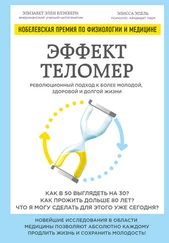11. Tarry-Adkins, J. L., et al., “Nutritional Programming of Coenzyme Q: Potential for Prevention and Intervention?” FASEB Journal: Official Publication of the Federation of American Societies for Experimental Biology 28, no. 12 (December 2014): 5398–5405, doi:10.1096/fj.14–259473.
12. Bull, C., H. Christensen, and M. Fenech, “Cortisol Is Not Associated with Telomere Shortening or Chromosomal Instability in Human Lymphocytes Cultured Under Low and High Folate Conditions,” PLOS ONE 10, no. 3 (March 6, 2015): e0119367, doi:10.1371/journal.pone.0119367; and Bull, C., et al., “Folate Deficiency Induces Dysfunctional Long and Short Telomeres; Both States Are Associated with Hypomethylation and DNA Damage in Human WIL2-NS Cells,” Cancer Prevention Research (Philadelphia, Pa.) 7, no. 1 (January 2014): 128–138, doi:10.1158/1940–6207.CAPR-13–0264.
13. Entringer, S., et al., “Maternal Folate Concentration in Early Pregnancy and Newborn Telomere Length,” Annals of Nutrition and Metabolism 66, no. 4 (2015): 202–208, doi:10.1159/000381925.
14. Cerne, J. Z., et al., “Functional Variants in CYP1B1, KRAS and MTHFR Genes Are Associated with Shorter Telomere Length in Postmenopausal Women,” Mechanisms of Ageing and Development 149 (July 2015): 1–7, doi:10.1016/j.mad.2015.05.003.
15. “Folic Acid Fact Sheet,” Womenshealth.gov, http://womenshealth.gov/publications/our-publications/fact-sheet/folic-acid.html, accessed November 27, 2015.
16. Paul, L., et al., “High Plasma Folate Is Negatively Associated with Leukocyte Telomere Length in Framingham Offspring Cohort,” European Journal of Nutrition 54, no. 2 (March 2015): 235–241, doi:10.1007/ s00394–014–0704–1.
17. Entringer, S., et al., “Maternal Psychosocial Stress During Pregnancy Is Associated with Newborn Leukocyte Telomere Length,” American Journal of Obstetrics and Gynecology 208, no. 2 (February 2013): 134.e1–7, doi:10.1016/j.ajog.2012.11.033.
18. Marchetto, N. M., et al., “Prenatal Stress and Newborn Telomere Length,” American Journal of Obstetrics and Gynecology , January 30, 2016, doi:10.1016/j.ajog.2016.01.177.
19. Entringer, S., et al., “Influence of Prenatal Psychosocial Stress on Cytokine Production in Adult Women,” Developmental Psychobiology 50, no. 6 (September 2008): 579–587, doi:10.1002/dev.20316.
20. Entringer, S., et al., “Stress Exposure in Intrauterine Life Is Associated with Shorter Telomere Length in Young Adulthood,” Proceedings of the National Academy of Sciences of the United States of America 108, no. 33 (August 16, 2011): E513–518, doi:10.1073/pnas.1107759108.
21. Haussman, M., and B. Heidinger, “Telomere Dynamics May Link Stress Exposure and Ageing across Generations.” Biology Letters 11, no. 11 (November 2015). doi:10.1098/rsbl.2015.0396.
22. Ibid.
Глава 13. Роль детства в нашей жизни: как ранние годы влияют на теломеры
1. Sullivan, M. C.,”For Romania’s Orphans, Adoption Is Still a Rarity,” National Public Radio, August 19, 2012, http://www.npr.org/2012/08/19/ 158924764/for-romanias-orphans-adoption-is-still-a-rarity.
2. Ahern, L., “Orphanages Are No Place for Children,” Washington Post , August 9, 2013, https://www.washingtonpost.com/opinions/orphanages-are-no-place-for-children/2013/08/09/6d502fb0-fadd-11e2-a369-d1954 abcb7e3_story.html, accessed October 14, 2015.
3. Felitti, V. J., et al., “Relationship of Childhood Abuse and Household Dysfunction to Many of the Leading Causes of Death in Adults: The Adverse Childhood Experiences (ACE) Study,” American Journal of Preventive Medicine 14, no. 4 (May 1998): 245–258.
4. Chen, S. H., et al., “Adverse Childhood Experiences and Leukocyte Telomere Maintenance in Depressed and Healthy Adults,” Journal of Affective Disorders 169 (December 2014): 86–90, doi:10.1016/j.jad.2014.07.035.
5. Skilton, M. R., et al., “Telomere Length in Early Childhood: Early Life Risk Factors and Association with Carotid Intima-Media Thickness in Later Childhood,” European Journal of Preventive Cardiology 23, no. 10 (July 2016), 1086–1092, doi:10.1177/2047487315607075.
6. Drury, S. S., et al., “Telomere Length and Early Severe Social Deprivation: Linking Early Adversity and Cellular Aging,” Molecular Psychiatry 17, no. 7 (July 2012): 719–727, doi:10.1038/mp.2011.53.
7. Hamilton, J., “Orphans’ Lonely Beginnings Reveal How Parents Shape a Child’s Brain,” National Public Radio, February 24, 2014, http://www.npr.org/sections/health-shots/2014/02/20/280237833/orphans-lonely-beginnings-reveal-how-parents-shape-a-childs-brain, accessed October 15, 2015.
8. Powell, A., “Breathtakingly Awful,” Harvard Gazette , October 5, 2010, http://news.harvard.edu/gazette/story/2010/10/breathtakingly-awful/, accessed October 26, 2015.
9. Authors’ interview with Charles Nelson, September 18, 2015.
10. Shalev, I., et al., “Exposure to Violence During Childhood Is Associated with Telomere Erosion from 5 to 10 Years of Age: A Longitudinal Study,” Molecular Psychiatry 18, no. 5 (May 2013): 576–581, doi:10.1038/ mp.2012.32.
11. Price, L. H., et al., “Telomeres and Early-Life Stress: An Overview,” Biological Psychiatry 73, no. 1 (January 1, 2013): 15–23, doi:10.1016/j.biopsych.2012.06.025.
12. Révész, D., Y. Milaneschi, E. M. Terpstra, and B. W. J. H. Penninx, “Baseline Biopsychosocial Determinants of Telomere Length and 6-Year Attrition Rate,” Psychoneuroendocrinology 67 (May 2016): –153–162, doi:10.1016/j.psyneuen.2016.02.007.
13. Danese, A., and B. S. McEwen, “Adverse Childhood Experiences, Allostasis, Allostatic Load, and Age-Related Disease,” Physiology & Behavior 106, no. 1 (April 12, 2012): 29–39, doi:10.1016/j.physbeh.2011.08.019.
14. Infurna, F. J., C. T. Rivers, J. Reich, and A. J. Zautra, “Childhood Trauma and Personal Mastery: Their Influence on Emotional Reactivity to Every-day Events in a Community Sample of Middle-Aged Adults,” PLOS ONE 10, no. 4 (2015): e0121840, doi:10.1371/journal.pone.0121840.
15. Schrepf, A., K. Markon, and S. K. Lutgendorf, “From Childhood Trauma to Elevated C – Reactive Protein in Adulthood: The Role of Anxiety and Emotional Eating,” Psychosomatic Medicine 76, no. 5 (June 2014): 327–336, doi:10.1097/PSY.0000000000000072.
16. Lim, D., and D. DeSteno, “Suffering and Compassion: The Links Among Adverse Life Experiences, Empathy, Compassion, and Prosocial Behavior,” Emotion 16, no. 2 (March 2016): 175–182, doi:10.1037/emo0000144.
17. Asok, A., et al., “Infant-Caregiver Experiences Alter Telomere Length in the Brain,” PLOS ONE 9, no. 7 (2014): e101437, doi:10.1371/journal.pone.0101437.
18. McEwen, B. S., C. N. Nasca, and J. D. Gray, “Stress Effects on Neuronal Structure: Hippocampus, Amygdala, and Prefrontal Cortex,” Neuropsychopharmacology: Official Publication of the American College of Neuropsychopharmacology 41, no. 1 (January 2016): –3–23, doi:10.1038/npp.2015.171. Arnsten, A. F. T., “Stress Signalling Pathways That Impair Prefrontal Cortex Structure and Function,” Nature Reviews. Neuroscience 10, no. 6 (June 2009): 410–422, doi:10.1038/nrn2648.
19. Suomi, S., “Attachment in Rhesus Monkeys,” in Handbook of Attachment: Theory, Research, and Clinical Applications , ed. J. Cassidy and P. R. Shaver, 3rd ed. (New York: Guilford Press, 2016).
20. Schneper, L., Brooks-Gunn Jeanne, Notterman, Daniel, and Suomi, Stephen. “Early Life Experiences and Telomere Length in Adult Rhesus Monkeys: An Exploratory Study.” Psychosomatic Medicine in press (n.d.).
Читать дальше
Конец ознакомительного отрывка
Купить книгу
